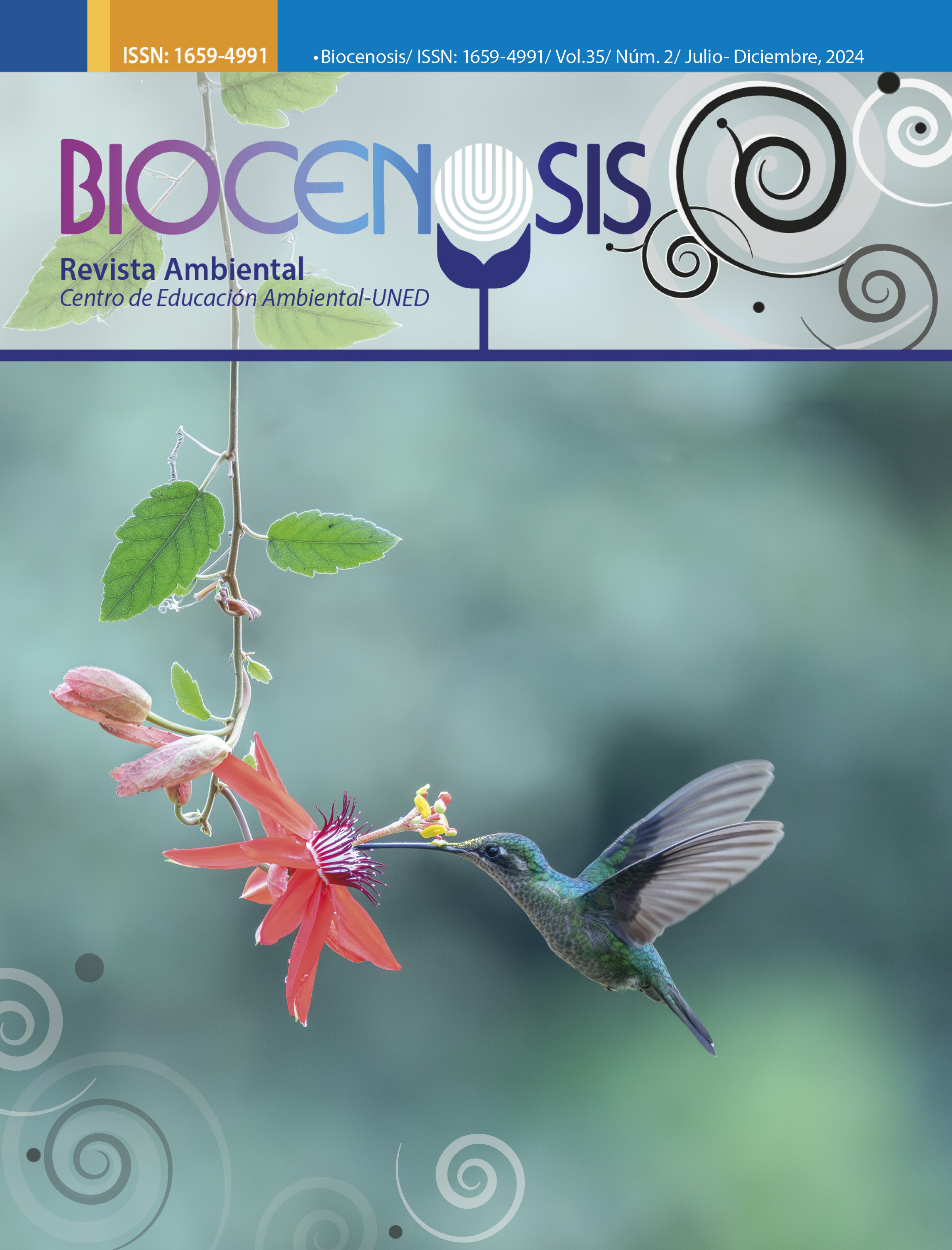Analysis of the tourism potential of a territory: Application of the READI methodology in a natural reserve of Tandil, Buenos Aires, Argentina
DOI:
https://doi.org/10.22458/rb.v35i2.5603Keywords:
Tandil, biodiversity, geodiversity, tourism development, READI matrixAbstract
The Sierra del Tigre Natural Reserve (RNST), located in Tandil, Buenos Aires Province, Argentina, represents a unique enclave of biodiversity, geodiversity, and cultural heritage in a peri-urban context. This study aims to evaluate the tourism development of the RNST using the READI matrix methodology (Resources, Actors, and Dynamics), specifically adapted for the analysis of the reserve and its surroundings. Through a mixed-methods approach, which includes the qualitative and quantitative analysis of the available resources, the participation of the subjects involved and the territorial dynamics, the strengths and weaknesses of the RNST were identified. The results highlight the valuable natural and cultural heritage of the area, while underscoring the need to diversify the funding sources, improve the tourist infrastructure and strengthen the community participation and territorial leadership. These actions are crucial to ensure a balanced and sustainable tourism development.
References
Bertoncello, R. V. y Troncoso, C. A. (2014). La ciudad como objeto de deseo turístico: Renovación urbana, cultura y turismo en Buenos Aires y Salta. Gran Tour: Revista de Investigaciones Turísticas, 9, 4-26.
Cingolani, C. A. (2008). Tandilia: Las rocas y los fósiles más antiguos de la Argentina (pp. 461-494). En CSIGA (Ed.), Sitios de interés geológico de la República Argentina, Instituto de Geología y Recursos Minerales, Servicio Geológico Minero Argentino.
Nouzeilles, G. (2002). Introducción (pp. 11-38). En Nouzeilles, G. (Ed.) La naturaleza en disputa. Retóricas del cuerpo y el paisaje en América Latina. Buenos Aires.
Pedrotta, V., Duguine, L. y Benedet, V. (2013). Pircas, sierras, turismo y desarrollo. Las construcciones de piedra del Sistema Serrano de Tandilia (provincia de Bs. As.). En II Jornadas Latinoamericanas "Patrimonio y Desarrollo". La Plata, Argentina.
Pulido, B. (2010). Teoría de los recursos y capacidades: El foco estratégico centrado en el interior de la organización. Sotavento M.B.A., 15, 54-61.
Ramos, V. A. (1999). Las provincias geológicas del territorio argentino, (pp. 41-96). En Caminos, R. (Ed.), Geología Argentina, 29(3),
Schneider, G. (2022). Geodiversidad, geoconservación y geoturismo: caso testigo en el espacio serrano de Tandil. Consideraciones para la reflexión teórica. Serie Correlación Geológica, 38 (2): 05 – 20.
Sierra del Tigre Tandil (s.f.). Sitio web oficial de la Reserva Natural Sierra del Tigre Tandil. http://www.sierradeltigretandil.org.ar
Sigalat Signes, E., Calvo Palomares, R., Aguado Hernández, J. A., y Payá Castiblanque, R. (2021). Validez de instrumento para medir la competencia territorial. Matriz READI para la autoevaluación de territorios competentes. Cuadernos Geográficos, 60(2), 31-51.
Tapella, E. (2023). El mapeo de actores claves: Una herramienta al servicio de la evaluación participativa. Rivadavia.
Valenzuela, S., Ramos, A., Schneider, G., Campo, L. y Peyran, J. (2023). Educación ambiental, educación informal y tecnología: Vínculos entre el CINEA (Centro de Investigación y Estudios Ambientales) y la Reserva Natural Sierra del Tigre (Tandil, Buenos Aires). Anuario del observatorio de educación mediada por tecnologías, (2), 16–26. https://ojs2.fch.unicen.edu.ar/ojs-3.1.0/index.php/anuario-observatorioempt/article/view/1662
Wernerfelt, B. (1984). A resource-based view of the firm. Strategic Management Journal, 5, 272-280.
Published
How to Cite
Issue
Section
License

This work is licensed under a Creative Commons Attribution-NonCommercial 4.0 International License.
